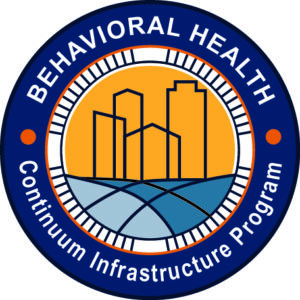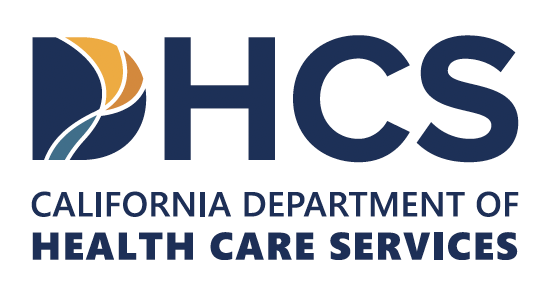Crisis and Behavioral Health Continuum
Frequently Asked Questions
Featured Questions and How to Use the FAQ
Questions and answers are grouped by funding opportunity. All responses are labeled either BHCIP, Joint RFA, or Children & Youth. This compilation is updated periodically.
For more information on the CCE program, including FAQs, please visit the program website.
Crisis and Behavioral Health Continuum Questions
In order to fully execute a BHCIP Program Funding Agreement (PFA), how do we proceed when the awarded project only pertains to a portion of the existing property/structure in place?
- California Infrastructure Team
- | June 1, 2023
- | FAQ - BHCIP Launch Ready, FAQ - Children and Youth, FAQ - Crisis and Behavioral Health Continuum
BHCIP PFAs require execution of a Declaration of Restrictions (DoR) and Performance Deed of Trust (PDoT) before a sponsor can begin to draw down awarded grant funds. The DoR and PDoT will encumber the entire property where the BHCIP project is located. The following options may be considered by sponsors in instances when the sponsor does not wish to impose certain restrictions on the property as a whole:
A) Non-county entity project sponsor options: (1) Execute the PFA and supporting documents as they are written, encumbering the entire property, and then work with DHCS/AHP to subdivide the property/obtain a lot line adjustment and amend the DoR and DoT once the subdivision/lot line adjustment is complete.
B) County entity project sponsor options: Same options as non-county sponsors with the exception that county entity BHCIP projects may utilize a legal description for the portion of the property to be funded by BHCIP in lieu of a lot line adjustment. This legal description must include a professional land survey map, conducted by a civil engineer who will provide the legal description to be recorded.
For more information on any of the above processes, please contact DHCS/AHP at BHCIP@dhcs.ca.gov.
Is my project required to conform with CEQA guidelines, or is it exempt?
- California Infrastructure Team
- | June 1, 2023
- | FAQ - BHCIP Launch Ready, FAQ - Children and Youth, FAQ - Crisis and Behavioral Health Continuum
Applicants should consult with their legal counsel and applicable local agencies regarding the California Welfare and Institutions Code section 5960.3(a)(b)(c). DHCS is not responsible for determining whether an awardee qualifies for CEQA exemption. As per the program funding agreement (contract), the applicant will be responsible for providing copies of all appropriate building permits and/or notice of CEQA exemption, if applicable.
Can required letters of support for BHCIP grant applications be signed through DocuSign?
- California Infrastructure Team
- | February 16, 2023
- | FAQ - Crisis and Behavioral Health Continuum
Yes, required letters of support will be acceptable using DocuSign. Please note that the signature date must be current and clearly visible.
Can a for-profit entity (private developer) be the lead applicant and still be eligible for the 10% match threshold if they execute a memorandum of understanding (MOU) with a nonprofit public benefit company service provider partner, or do the two have to be co-applicants (for-profit and nonprofit)?
- California Infrastructure Team
- | February 10, 2023
- | FAQ - Crisis and Behavioral Health Continuum
“Only nonprofit entities are entitled to the 10 percent match. To meet the 10 percent match requirement, either the applicant or the co-applicant must be a nonprofit company.
If a single applicant is a for-profit entity, the match requirement is 25 percent. A for-profit applicant that has executed an MOU with a nonprofit service provider is not eligible for the nonprofit match amount of 10 percent because again, the nonprofit must be either the applicant or the co-applicant.”
Are sobering centers funded under the Drug Medi-Cal Organized Delivery System (DMC-ODS) and/or Community Supports?
- California Infrastructure Team
- | January 26, 2023
- | FAQ - Crisis and Behavioral Health Continuum
When sobering centers are identified as an eligible facility type for BHCIP funding, the sobering center must also be connected to the DMC-ODS and/or Community Supports.
The Community Support services must be covered as an “in lieu of service” by managed care plans on a voluntary basis.
When the sobering center is part of a DMC-certified provider with a contract with a DMC-ODS county, service components within the withdrawal management services benefit are covered under DMC-ODS. BHIN 23-001 (Supersedes BHIN 21-075) has more details. Please contact countysupport@dhcs.ca.gov with any questions on the DMC-ODS benefit.
“The applicant is aware of the fund expended deadline; however, their project is massive and will take several years after the state’s deadline to complete. They have multiple funding sources available and would like to know the following. Will the state fund a project that will not be completed by 2026-27 deadline? *This project is in Central Coast – with the least amount of grant applications.”
- Arold Jacques
- | January 23, 2023
- | FAQ - Crisis and Behavioral Health Continuum
It is understood that some projects will continue construction after Dec 31, 2026. This is allowable. The goal of the Sponsor in these cases should be to expend BHCIP funds before Dec 31, 2026. BHCIP funds stop on Dec 31, 2026. Therefore, it is up to each Sponsor to expend their BHCIP funds before Dec 31, 2026.
Can non built-in furnishings (such as desks, tables, and chairs) be included in the Behavioral Health Continuum Infrastructure Program (BHCIP) budget?
- Arold Jacques
- | January 9, 2023
- | FAQ - Crisis and Behavioral Health Continuum
“BHCIP does not fund non built-in furnishings. Non-built-in furnishings are considered FFEs, which are items that are not permanently affixed to a building and are consequently easily removable from their respective locations within the building.
BHCIP funds are only intended for behavioral health infrastructures. BHCIP funds can cover real property that is permanently affixed to the building. For example, a built-in concrete bench is real property that can be funded by BHCIP. Items such as, but not limited to, refrigerators, computers, chairs, tables, and microwaves are all examples of personal property and are not funded by BHCIP. If you have any additional questions regarding allowable or non-allowable expenses, please reach out to BHCIP@dhcs.ca.gov.“
Are furniture, fixtures, and equipment (FFE) covered by these Behavioral Health Continuum Infrastructure Program (BHCIP) grants?
- Arold Jacques
- | January 9, 2023
- | FAQ - Crisis and Behavioral Health Continuum
FFE is not an allowable expense through the BHCIP funding grants. FFEs are items that are not permanently affixed to a building and are consequently easily removable from their respective locations within the building. These items may include but are not limited to desks, chairs, computers, electronic equipment, tables, bookcases, and partitions. If you have any additional questions regarding allowable or non-allowable expenses, please reach out to BHCIP@dhcs.ca.gov.
What are considered appropriate “step-down services”?
- Arold Jacques
- | January 5, 2023
- | FAQ - Crisis and Behavioral Health Continuum
Please refer to the ASAM Treatment Criteria to determine the appropriate level of care across the behavioral health continuum. https://www.asam.org/asam-criteria/about-the-asam-criteria

